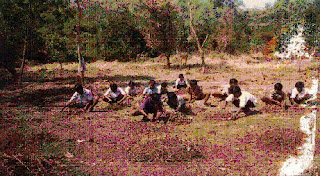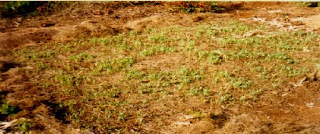I attended the course on nutrition Re-education programme at the HEALTH AWARENESS CENTER and the caption which read –
HEALTH CARE IS SELF CARE IS EARTH CARE
immediately connected with me. My experiences in Natueco City farming have made me realize the importance of sustainability in harmonious relationship with the environment.
At the center I learnt to use the farm fresh food in the most effective way so as to enable the body to make use of all the nutrition the food is capable ofproviding. I learnt – Quote “Nutrition is much more than food. In fact proper nutrition involves the whole sphere of living. It covers our basic needs like food, air, sunshine, rest and relaxation. It also involves our interaction with the environment, our relationships, and our capacity for creativity and activity. It is only through adequate nutrition that health and healthful living can be achieved.
Fitness can be achieved through exercise. But exercise is only one aspect of Health. Exercise is not restricted to muscular flexibility or supple tendons. Exercise can also be walking, dancing, gardening, singing, taking the stairs, yoga, meditation etc… exercising is the joy of activity – be it cooking or weight lifting or climbing a mountain. Activity is therefore one aspect of health.
Even eating the most perfect raw natural foods everyday will not magically conjure up health. Food is only the stepping stone aided by our choices, to attain good health. Health foods served in spas, gyms are manufactured in a factory that only serve to pollute the air, water, space land and her resources.” -- The handbook of Nutrition Re education Programme (The Health awareness Center)
These external factors are more important to health than anyone of us would believe. Even plants receive 98% of the nutrition from the atmosphere. Only 2% from the soil ! This 2% is what gives vital energy to our food. Damage to Earth and her resources directly inflicts damage on us.
“With growth of the science of ecology (including the various aspects of pollution) the connection between our own natural wealth (health) and health (wealth) of the planet has been established. Our body is the greatest ecological system ever designed. The human organisms symbiotic relationship within themselves and with all organisms within the environment is the biggest testimony to all this. The natural laws that all organisms in the world around us listen to are the same laws that we as humans are meant to abide by. These laws were crafted by nature for a healthy life. (There were no hospitals, no doctors, and no medicines in the wild) yet they are ruled by the same laws of creation that govern people.
Attuning ourselves and regaining our consciousness to this web of nature is what it also takes to be healthy. Here is an attempt to share some farm fresh recipes that we have learnt over the years from books, friends and teachers at the center.
We make our herbal tea using ingredients shown below.

The photo above depicts how the ingredients can be planted on the terrace or a farm. Design courtesy my good friend Sabrina Modak.
Ingredients:
Lemon Grass
Mint (Pudina)
Tulsi (Holy Basil)
Ginger
Organic Jaggery (Optional)
Lime (Optional)
Also some red Hibuscus flowers if available
Mix the herbs and boil with water till you smell a fresh aroma of all the herbs. Strain and drink.
As I was making a catalog of the 150 varieties of plants on the MbPT terrace I realised that there is actually a whole pharmacy up there.
A few medinal benefits of the ingredients:
Lemon Grass
Botanical Name: Cymbopogon citratus
Common Name : Lemon grass
Family : Poaceae( Grass family)
Native to India
Propagated by division of clumps
Citronella is known for its calming effect that relieves insomnia or stress. It is also considered as a mild insect repellant. But more than scent, lemon grass provides a lot of health benefits. Studies have shown that the lemon grass has antibacterial and antifungal properties. Drank as tea, it is an effective diuretic.
A recent study by the Food and Nutrition Research Institute of the department of Science and technology ( DOST ) claims that every 100g of lemon grass when boiled can contain up to 24.205 micrograms of beta-carotene the anti-oxidant that scientists believe can help prevent cancer. Another DOST study shows that lemon grass oil has the potential as a tropical eye medication against keratomycosis, an inflammation of cornea often associated with burning or blurring of vision.
Ginger
Botanical Name : Zingiber officinale
Common Name : Ginger
Family : Zingiberaceae
Native to Southeast Asia
Propagated by rhizome
Ginger has been revered in Indian and Chinese civilizations for over 5000 years for its powerful health imparting properties. In fact, Indian ginger is said to have the most potent medicinal properties. Danish researchers found that ginger can block the effects of prostaglandin - a substance that cause inflammation of the blood vessels in the brain and can lead to migraines.
nausea, digestive problems, circulation and arthritis. Nausea caused during pregnancy or by travelling is one of the benefits of ginger root. Ginger is also known to have the ability to calm an upset stomach and to promote the flow of bile. Stomach cramps can be eased and circulation can also be improved. Ginger supports a healthy cardiovascular system by making platelets less sticky which in turn reduces circulatory problems.Ginger oil used for massage can help relieve painful arthritis due to its anti-inflammatory properties. Ginger is often included in many herbal decongestants and can help to minimize the symptoms of respiratory conditions, colds and allergies.
Tulsi
Botanical Name : Ocimum tenuiflorum
Common Name : Holy Basil
Family : Lamiaceae
Native to India
Propagated by seeds
The tulsi plant has many medicinal properties. The leaves are a nerve tonic and also sharpen memory. They promote the removal of the catarrhal matter and phlegm from the bronchial tube. The leaves strengthen the stomach and induce copious perspiration. The seed of the plant are mucilaginous.The leaves of basil are specific for many fevers.
During the rainy season, when malaria and dengue fever are widely prevalent, tender leaves, boiled with tea, act as preventive against these diseases. In case of acute fevers, a decoction of the leaves boiled with powdered cardamom in half a liter of water and mixed with sugar and milk brings down the temperature. The juice of tulsi leaves can be used to bring down fever. Extract of tulsi leaves in fresh water should be given every 2 to 3 hours. In between one can keep giving sips of cold water. In children, it is very effective in bringing down the temperature.
Other benefits include: Help heal Cough, sore throat, respiratory disorders, Kidney stone, heart disorder, mouth infections, insect bites, Headaches, skin disorders, eye disorders……
Pudina
Botanical Name : Mentha Arvensis.
Family: Lamiaceae
Native of America
Propagated by rhizomes
Mint is refreshing, stimulative, diaphoretic, stomachic, and antispasmodic. It helps in colds, flu, fever, poor digestion, motion sickness, food poisoning, rheumatism, hiccups, stings, ear aches, flatulence and for throat and sinus ailments.
.
References for medicinal Benefits:
http://www.buzzle.com/editorials/9-2-2006-107399.asp
http://www.healthandyoga.com/html/product/gteabeni.html
http://hinduism.about.com/od/ayurveda/a/tulsibenefits.htm
http://www.nutritional-supplements-health-guide.com/benefits-of-ginger.html


 Fresh Spinach free from any pesticides, from your own little green patch
Fresh Spinach free from any pesticides, from your own little green patch Green cucumbers, crispy and cooling
Green cucumbers, crispy and cooling Sweet tender corn
Sweet tender corn







 The waste can be finely chopped or pulverized and added on the bagass. After every 15 days a layer of sugarcane bagass should again be added.
The waste can be finely chopped or pulverized and added on the bagass. After every 15 days a layer of sugarcane bagass should again be added. There is no cause of worry as roots do not enter the slab to any harm to the structure. They stop growing at the point where they do not get soil.
There is no cause of worry as roots do not enter the slab to any harm to the structure. They stop growing at the point where they do not get soil.
 What we call topsoil can be found below big trees or under the bushes, in nooks and corners of the path of flowing water. The top soil should be collected by scrapping (only1 cm) the layers of any unturned soil and never by digging. This topsoil is a necessary ingredient, because it contains essential minerals along with dormant forms of microbes. By using this topsoil with the bio mass (leaves) we are providing an atmosphere to activate the dormant microbes. The microbes will become active when we mix the topsoil with the moist biomass.
What we call topsoil can be found below big trees or under the bushes, in nooks and corners of the path of flowing water. The top soil should be collected by scrapping (only1 cm) the layers of any unturned soil and never by digging. This topsoil is a necessary ingredient, because it contains essential minerals along with dormant forms of microbes. By using this topsoil with the bio mass (leaves) we are providing an atmosphere to activate the dormant microbes. The microbes will become active when we mix the topsoil with the moist biomass. Collect different kinds of green biomass from surrounding areas. Chop green parts of plants, leaves and let them dry.
Collect different kinds of green biomass from surrounding areas. Chop green parts of plants, leaves and let them dry.

 Sprinkle Amrut Jal to moist the topsoil. Keep on alternating the layers, until a height of one foot is reached, i.e. about 15 to 20 layers.
Sprinkle Amrut Jal to moist the topsoil. Keep on alternating the layers, until a height of one foot is reached, i.e. about 15 to 20 layers.

 These sprouted seeds are then broadcast on heaps as explained above providing the layer of 2" nursery soil or top soil on the heap (of biomass.)
These sprouted seeds are then broadcast on heaps as explained above providing the layer of 2" nursery soil or top soil on the heap (of biomass.)
 Let the cut sapling also grow for another 21 days. Then, again cut off 25% of the growth, which will consist of matured leaves. Put these green cuttings on the compost heap. These provide the nutrients nitrogen, magnesium and potash.
Let the cut sapling also grow for another 21 days. Then, again cut off 25% of the growth, which will consist of matured leaves. Put these green cuttings on the compost heap. These provide the nutrients nitrogen, magnesium and potash.